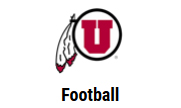Pediatric Sports Medicine
- Preparing for your Clinic Visit
- Preparing for your Surgery Day
- Procedures
- What to Expect After Surgery
- Follow Up Appointments
- Support Numbers
The number of children participating in sports activities has been increasing over the recent years resulting in a substantial rise in the incidences of sports injuries. Even though there are several benefits of active participation in sports, including building up of self-confidence, physical fitness, and learning to work in a team, there is also a risk of sports-related injuries. The risk of having an injury increases by a lack of protective gear especially during sports activities such as boxing, wrestling and hockey.
Childhood sports injuries are injuries may either be accidental injuries or develop as a result of inadequate training or practice. The most common sports injuries in children are soft-tissue injuries and head injury.
Some of the common sports injuries in children include:
- Sprains and Strains: A strain refers to the stretching or tear of a muscle or tendon (tissue that connects muscles to bone) while a sprain refers to the stretching or tear of a ligament (tissue that connect adjacent bones).
- Growth plate injuries: Growth plate injuries result from a damage to the area at the end of the long bones (growth plate), of a growing child.
- Repetitive Motion Injuries: Repetitive motion injuries are caused by overuse of the tendons and muscles. It includes stress fractures and tendinitis (inflammation of the tendon). These injuries cause severe pain and discomfort.
- Heat-Related Illnesses: Heat-related illnesses include dehydration (loss of body fluids), heat exhaustion and heat stroke (characterized by hot dry skin, headache, and dizziness leading to vascular collapse, coma, and death).
Causes of sports injuries
The causes of sports injuries in children include:
- Slow reaction time: The slower reaction time in growing children makes them susceptible to sports related injuries
- Poor training or practice
- Lack of adequate protection gear such as mouth guards, headgears for respective sports
- Insufficient stretching or warm-up exercises before playing
Types
The sports injuries in children can be acute injuries or overuse injuries.
Acute injuries: Young children may develop minor bruises, sprains and strains. Teenagers are likely to sustain more severe injuries such as broken bones and ligament tear. Acute injuries most commonly occur due to a lack of proper protective equipment during sports activities.
Overuse injuries: These injuries occur because of continuous stress on the bones and muscles from repetitive movements of a particular joint. The most common types of overuse injuries are:
- Anterior knee pain: It refers to pain in the front of the knee, below the kneecap associated with swelling because of inflammation of the tendon or cartilage.
- Little League elbow: It causes pain in the elbow because of repeated throwing action and may be associated with a difficulty in extending the arm.
- Swimmer’s shoulder: It causes pain and swelling of the shoulder because of stress from repetitive movements of the shoulder during activities such as swimming or throw ball.
- Shin splints: It leads to pain and discomfort in the front of the legs due to continuous running or overtraining.
- Spondylolysis: This condition is characterized by chronic low back pain due to repeated stretching of the back muscles and is common in children who engage in sports such as football, weightlifting, gymnastics and wrestling.
Risk factors
The factors associated with an increased risk of sustaining a sports injury, in children, include:
- Growth spurt phase (period of rapid growth during adolescence): During this period, the elasticity of the bone is reduced due to rapid bone growth, which predisposes the bone to injury
- Improper use or lack of protective equipment’s and unfavorable environmental conditions increase the risk of injury
- Poor nutrition: Lack of a healthy diet predisposes a child to injury
Treatment
Treatment for sports injuries depends on the nature of injury. The most common treatment recommended for sports-related injury is rest, ice, compression and elevation (RICE). H
- Rest: Avoid activities that may cause injury.
- Ice: Ice packs can be applied to the injured area which will help to diminish swelling and pain. Ice should be applied over a towel to the affected area for 15-20 minutes four times a day for several days. Never place ice directly over the skin.
- Compression: Compression of the injured area helps to reduce swelling. Elastic wraps, air casts, and splints can accomplish this.
- Elevation: Elevate the injured part above heart level to reduce swelling and pain.
Prevention
Some of the measures that are to be followed to prevent sports related injuries include:
- Follow an exercise program to strengthen the muscles
- Gradually increase your exercise level and avoid overdoing the exercise
- Ensure that you wear properly-fitted protective gear such as elbow guards, eye gear, facemasks, mouth guards, and pads, comfortable clothes, and athletic shoes before playing any sports activity which will help to reduce the chances of injury
- Make sure that you follow warm up and cool down exercises before and after sports activity. Exercises will help to stretch the muscles, increase flexibility, and reduce soft tissue injuries
- Avoid exercising immediately after eating a large meal
- Maintain a healthy diet which will nourish the muscles
- Avoid playing when you are injured or tired. Take a break for some time after playing.
- Learn all the rules of the game you are participating in
- Ensure that you are physically fit to play the sport



















